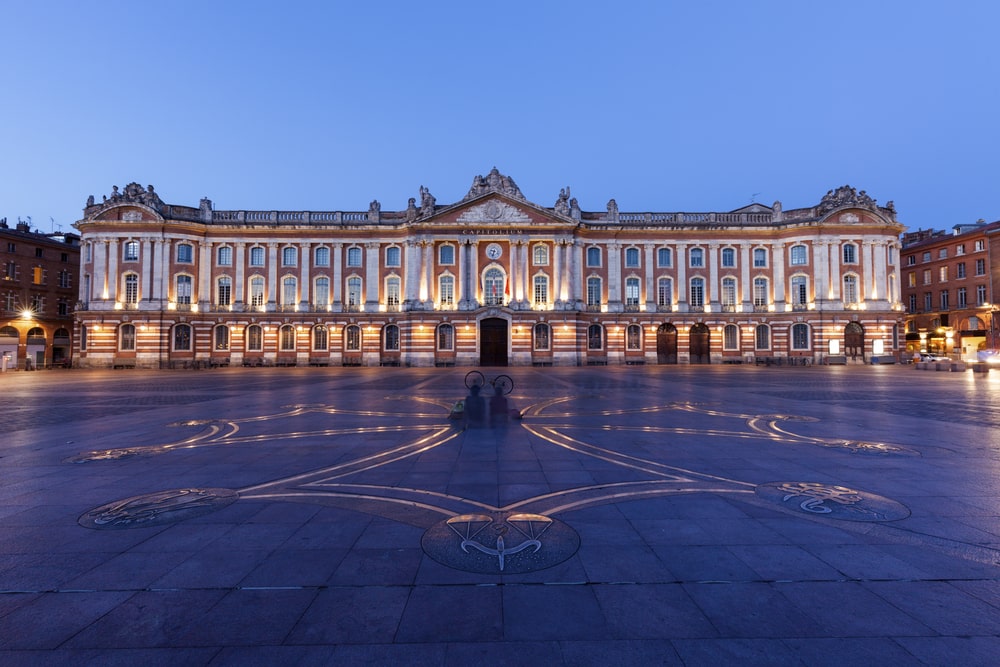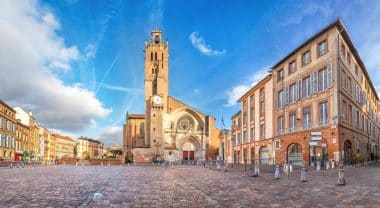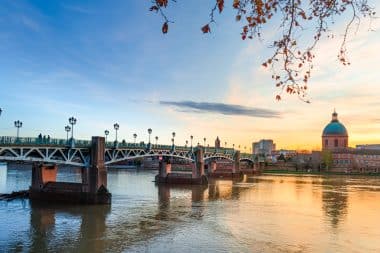
When it comes to fame abroad, Toulouse is somewhat overshadowed by major French cities such as Lyon, Marseille, Paris or Bordeaux. The fourth-largest city in France is not only historically one of the most important cities in the south of France, but also has a long history and a variety of sights to offer. Located deep in the French Languedoc, the Romans have already developed Toulouse into one of the most important cities in Europe. The pink city, as it is called because of the special colour scheme in the bricks of the houses, is now a cultural metropolis and a little insider tip for city trips in Europe.
From Gaul to Renaissance city – the history of Toulouse

Even when the Romans ruled over France and gave the area the name Gaul, Toulouse was a city of importance. They developed the city into the center of the province on the border with Spain and for a while all roads in France led not only to Rome, but also to Toulouse. This design can still be seen today. If you walk through the city on your own, you will find Roman street design not only in the materials, but also in the structure of the city center and the old town. Toulouse was a center for the south of France and has remained so to this day.
Toulouse was to retain its special position for centuries, which was also shown by various buildings from the early and late Middle Ages in the city. In the Renaissance, it developed into one of the most important trading cities and also managed to survive the industrialization of France as far as possible. In the modern era, Toulouse was transformed into a city of research, teaching and training. It is not only home to the core of France’s aircraft industry, but also to one of the country’s most important universities and a popular destination for student exchange programs around the world.
Between modernity and history – Toulouse between worlds

The contrast of the last centuries is clearly evident on a walk through the city. It is not for nothing that Toulouse has earned its reputation as a city of pupils and students. Not only is the average age of young people in the city immediately noticeable, the contrast between the centuries and the generations is also evident in the cityscape. There, a historic church from the Middle Ages and one street down is a testament to the very active graffiti scene in the city, which mixes with street art that can be extremely political.
It is noticeable that the sometimes narrow streets, which have their origins in Roman times, merge seamlessly into wide and open squares, which are also a popular meeting place for the inhabitants of the city. The best example of this is certainly the Place du Capitol. The historic town hall from the 16th century and the façade from the 18th century with the huge market square is a testimony to a time when the south of France was ruled by Toulouse and a testimony to the power and prosperity that the city had for many centuries.
If you are looking for historical sights, you should of course also take a look at the many churches that dominate the city skyline. Whether it’s the Gothic cathedral of Saint Etienne or the monastery of Les Jacobins, the church has always played an important role in the history of the city. The Basilica of St. Sernen de Toulouse and Notre-Dame du Taur round off the range of historic church buildings. In addition, many museums and state theaters are located in buildings that were largely built in the Middle Ages or the Renaissance.
But Toulouse is more than a collection of historic buildings. The city is impressively green for its size, which is evident in the many parks and green spaces in the city. The Canal du Midi, which connects Toulouse to the Mediterranean Sea, is a UNESCO World Heritage Site and was an important tool for trade in the city in the past, is also likely to be responsible for this.
Nightlife and culture when visiting Toulouse
In the topics of culture and leisure, the rather young spirit of the city is once again evident. Toulouse has a great nightlife with bars, pubs and restaurants that run through many districts of the city. If you move through the old town and the city center after dark, you will inevitably find many groups of people meeting friends in a restaurant or on their way to the nearest club to turn night into day. Since the various buildings are also particularly illuminated at night, an evening walk can be worthwhile even if you don’t want to wait in a club for the latest hits of the French charts.
A good reason to get an impression of the nightlife for yourself are the many cultural institutions. The theatres offer great performances, the museums are usually open until late in the evening and the young talents of the French poetry slam scene show off on the stages. All in all, there are plenty of opportunities to find a way to end the day after a stroll through the city and how to get an impression of the fresh spirit that animates the city today.

